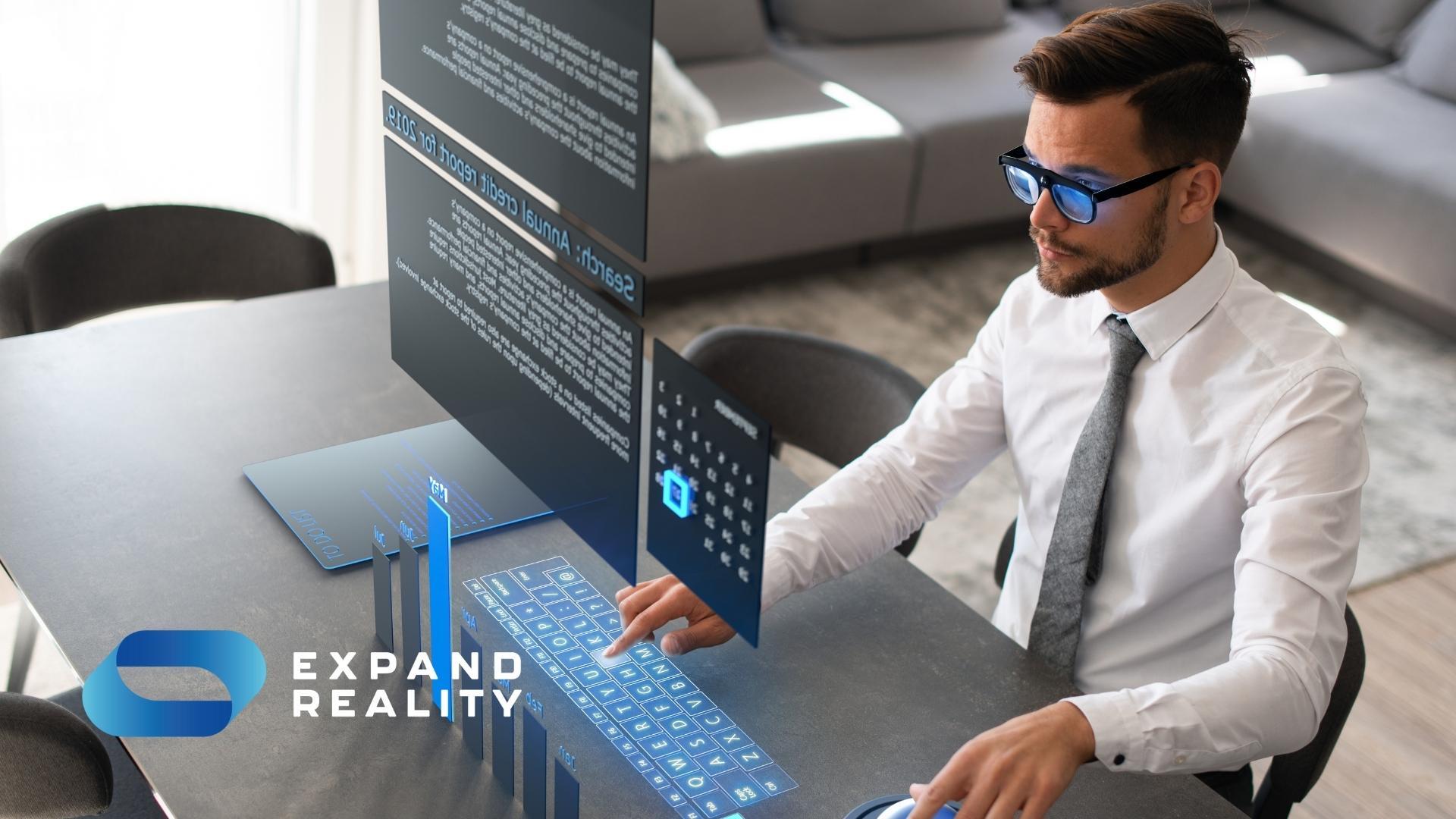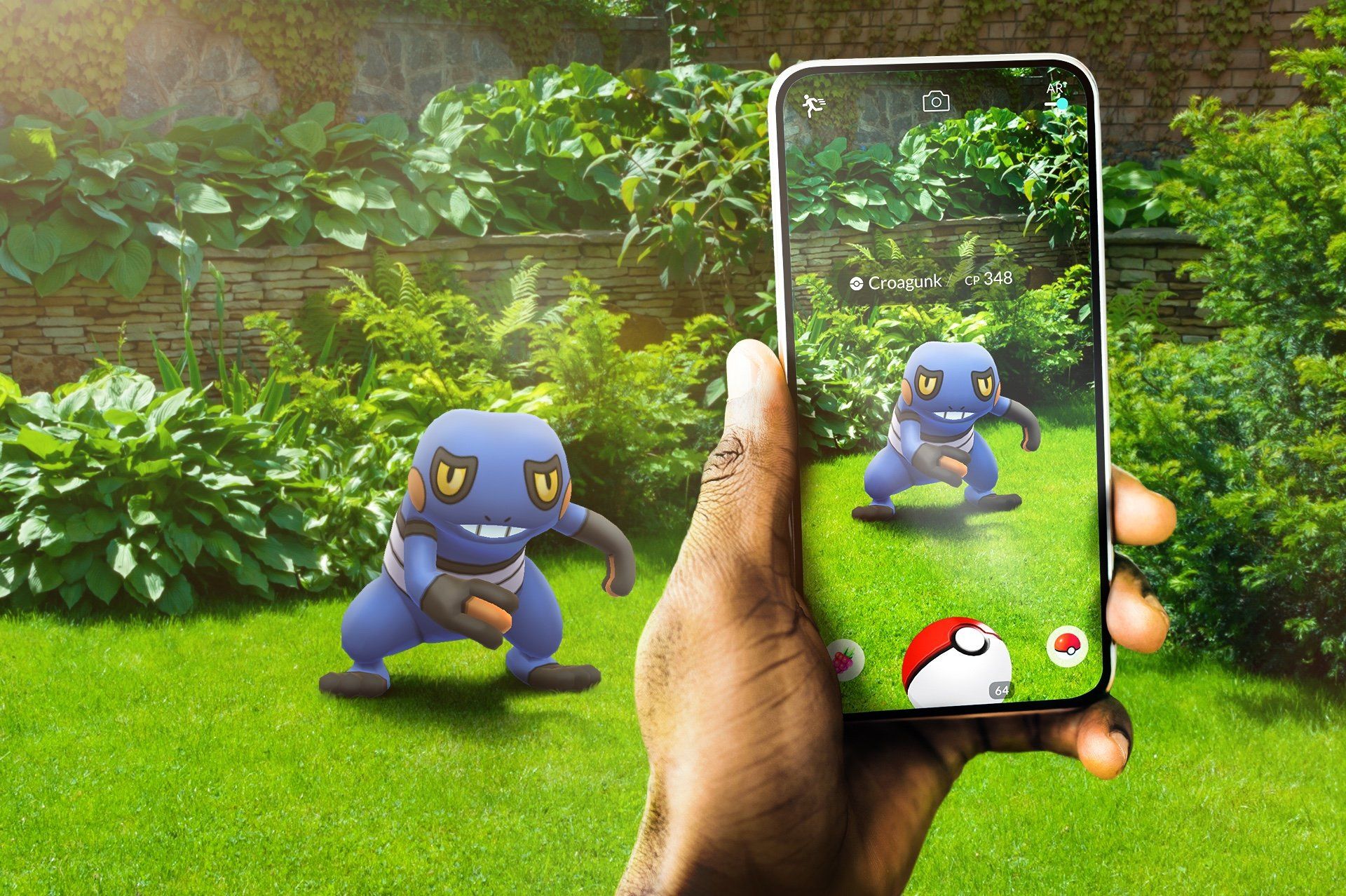hello@simplyvideo.io
When augmented reality went mainstream
Augmented reality is a transformative technology that's already broken the mainstream. It's also making waves in the world of business. Learn more inside.

What is augmented reality, or AR? Even if you're not familiar with the term, you'll more than likely have encountered it.
Put simply, AR is the overlaying of images onto the real world through a device, be it a smartphone or
headset. It differs from virtual reality, or VR, in that it doesn't aim to plunge you into another world – rather, it shows you the world before your eyes but blends it with artificial elements.
AR has already broken the mainstream consumer market and is a feature available to any smartphone user. Let's take a look at some examples…

Pokémon Go
Pokémon Go is an AR game that grew out of Nintendo's Pokémon franchise. This franchise includes video games, films, books, merchandise… even a theme park! It centres on fictional creatures called "Pokémon", which are caught and trained by human Pokémon Trainers. They then battle each other for sport.
Pokémon Go's innovation was to take this premise and apply it to a mobile game app. Users take on the role of Pokémon Trainers and catch and train Pokémon out in the real world. The user's everyday environment is transformed by AR into a hunting ground for Pokémon, who enter the player's smartphone screen with lifelike movements.
The game was released by Niantic in 2016 and since then has generated $5 billion in player spending. It has been downloaded over 500 million times.
These numbers alone demonstrate that augmented reality isn't the preserve of tech developers, but a huge phenomenon that has penetrated consumer markets.

Snapchat filters
If you've ever pointed your phone at your face, taken a picture, and then jazzed it up with dog's ears or a handlebar moustache, then you've experienced augmented reality.
Snapchat's messaging app teems with filters that you can superimpose on your face. This innovation has been taken up by other apps, including Instagram on its "stories"' feature.
With 293 million daily active users, Snapchat shows that AR is here to stay – and that it's not limited to the world of gaming.

L'Oréal's Makeup Genius app
In 2014, makeup giant L'Oréal launched its Makeup Genius app. This works a little like a Snapchat filter – your phone's camera identifies your face, and then overlays makeup on it.
Users can try before they buy and see how they look with different shades or colours of a particular product. When they've hit on the right hue for them, they're able to follow a link and order it from the L'Oréal online store.
This app shows how retailers are getting in on the action. AR isn't limited to gaming and selfies – it also gives consumers a chance to browse realistic make-up looks at their leisure.

IKEA Place
In 2017, IKEA launched an AR app called IKEA Place. This offers an innovative solution to a problem that's dogged furniture buyers from time immemorial – not quite knowing if a piece of furniture will fit, or if it will complement the room.
Now, users of the IKEA Place app can scan a room with their smartphone or tablet. They're then able to drag and drop prospective items of furniture from the IKEA database into their desired spot and see for themselves if it's the one to go for.
As with the L'Oréal app, this also links directly to the IKEA website, making purchasing quick and easy.
What's next?
As you can see, AR is now an established part of gaming, social media, and retail – but it's also transforming business.
Industry-leading devices such as the Magic Leap 1 and Microsoft HoloLens 2 are wearable, head-mounted devices that allow the user to see the real world overlaid with digital elements.
The possibilities for AR technology in the workplace are boundless. It has the potential to save time and resources and empower staff in many sectors, including construction, healthcare, automotive, manufacturing, and oil and gas.
Let's take a look at the last of these and discover how AR is making waves in business as well as the mainstream.

AR in the oil and gas sector
Oil and gas sites are fraught with risks and hazards. Staff in this sector must undergo in-depth training to keep themselves safe on the frontline.
Typically, this means that companies spend a huge amount of money on transporting workers to on-site training – where, it's agreed, their book smarts will be supplemented by challenging real-world scenarios. This is an important part of training, as it gives them the know-how to manage disasters and acquire situational awareness.
Surely, though, there must be a cheaper and more efficient way of delivering this training?
AR headsets like the ones we mentioned above provide one solution to this problem. Let's say a trainee needs to learn how to repair a particular piece of equipment. This scenario can be recreated with a headset in such a way that the equipment appears lifelike, right there before them.
What's more, these devices can deliver realistic training scenarios in the classroom – scenarios that would be much too dangerous to recreate on site.
Augmented Reality's seamless blending of virtual elements with the real world opens doors for training in every sector, not just oil and gas.
The bottom line
Augmented reality is already a thriving consumer market, one which will only continue to grow as big brands work on AR solutions – Apple, for instance, with their rumoured "Apple Glass". And on top of that, it's increasingly providing solutions to businesses from a range of sectors.
If you're interested in these transformative technologies, and how they overlap with virtual reality and assisted reality, then discover more XR industry use cases. Or, if you're intrigued enough to try one of these devices, why not book a free demonstration?

Contact Us
Connect global teams. Collaborate with remote experts. Streamline processes and unlock cost savings with industry-ready extended reality technology.
Contact Info
hello@expandreality.io
Gemini Business Park
Sheepscar Way
Leeds
LS7 3JB
All Rights Reserved | Expand Reality







